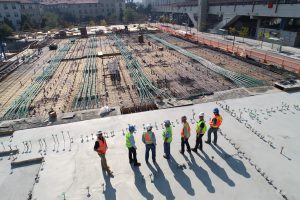The Art of Contingency Planning: Dealing with Unforeseen Costs
“One thing that makes it possible to be an optimist is if you have a contingency plan for when all hell breaks loose.” Randy Pausch
What is Contingency Planning? 
Contingency planning is a strategic plan to allocate resources, time, and money if “all hell breaks loose” on a project. It considers risk mitigation and planning for a worst-case scenario. Contingency planning in construction is necessary.
You're expected to throw in a percentage to cover a contingency plan in your estimates but is it enough? There is an art to this type of planning and, if project leaders aren’t careful, a contingency plan could cost the company a lot more than lapsed deadlines, busted budgets, and a happy customer.
We are going to dive into the art of contingency planning and how you can deal with unforeseen costs.
Building Contingency into Budgets
There are three methods for estimating a contingency: percentage-based, parametric, and risk assessment. It should be emphasized that whatever method your company uses should be transparent and well-justified. Your customer, as well as your internal team will appreciate it when “all hell breaks loose”!
Percentage-based means an allocation of a percentage of the project budget to cover anything that may arise as a contingency. This option is more arbitrary than data informed. However, for multi-year construction projects you can apply different levels of escalation as contingency to each successive period. 0% for year 1, that’s all bid out. 3.5% for year 2 scope. 7.12% for year 3 (3.5% compounded for two periods). Showing this level of detail to a project owner may give off “scientific planning” without it being too laborious.
A parametric method uses similar project historical data or industry benchmarks. You’ll need to know the risk parameters well and compare them to past projects. This method is primarily used on large and mega projects as the models must be validated and calibrated against your historical data. This effort leans on your company’s collective experiences to fill in unknowns and may affirm to the project owner they made the right choice by choosing your company for the job.
Risk assessment is more detailed and involved because you’ll need to layout specific risks for the project and associate a contingency amount to their impact. This is really about “how sure am I that I know the final cost is not going to be MORE than my guess?” This still involves historical information analysis, but you are trying to cover some degree of certainty.
Estimators can incorporate four contingency areas into their estimate. We will call them the “how,” “what,” “why,” and “when” contingency. A lot of the best contingency practices depend on contract type and delivery method.
There are four categories of scope to consider when talking contingency from a prime contractor's perspective:
- Construction Contingency. These are unforeseen means and methods issues. These are gaps in the "how" that aren't understood prior to encountering the gaps.
- Design Contingency. These are unforeseen design issues. These are gaps in the "what" that aren't clear or understood. During design phases, these gaps are natural and a part of the process. As design progresses, gaps are filled. During construction, there can still be design gaps. The Authorities Having Jurisdiction (AHJ) may interpret the code differently, a condition may exist that wasn't expected, etc.
- Owner Contingency. These are unforeseen gaps in intent. These are the "why" gaps. The owner doesn't always know all the why's they are building the project for. Usually they have a primary (what the building does), secondary (who's doing the things in the building), and sometimes to deeper levels. But invariably the project owner hasn't delved into the theoretical weeds and won't until the weeds start growing (when the submittals start coming in and the color boards are presented).
- Escalation (inflation) Contingency. These are the unforeseen gaps in time as it relates to cost. Projects take longer than most vendors can handle the risk of material costs. So, you must account for the "when" gaps.

-1.png?width=112&height=112&name=image%20(4)-1.png)














